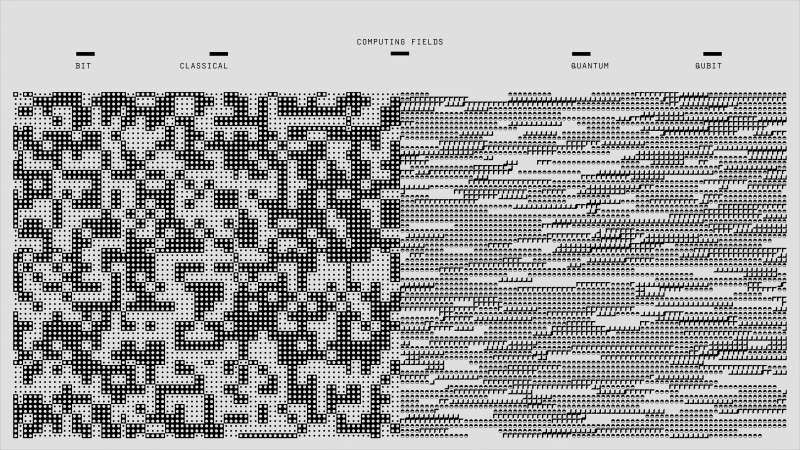From Blockchain to Web3: The New Era of the Internet
Published on: May 1, 2025
In the past three decades, the internet has gone through radical transformations. From the static pages of Web 1.0 to the dynamic, user-driven Web 2.0, each phase has redefined how we interact online. But now, we are on the brink of a new digital revolution: Web3—an internet powered by decentralization, transparency, and user ownership. At the heart of this transformation is blockchain technology, which lays the foundation for a more open, secure, and equitable digital world.
This article explores the journey from blockchain to Web3, the principles driving this shift, the new models of work and governance it enables, and the challenges that lie ahead.
1. The Evolution of the Internet: Web1 to Web3
To understand Web3, it's important to look back at how the internet has evolved.
Web 1.0 (The Static Web)
-
Time period: 1990s – early 2000s
-
Characteristics: Read-only websites, minimal interactivity, centralized control
-
Users were passive consumers of content created by a few entities (e.g., news portals, encyclopedias, corporate sites).
Web 2.0 (The Social Web)
-
Time period: Mid-2000s to present
-
Characteristics: User-generated content, interactivity, social media, mobile apps
-
The rise of platforms like Facebook, YouTube, and Twitter enabled billions to create and share content, but at the cost of data centralization and surveillance capitalism. Users produce value, but large corporations own the data.
Web 3.0 (The Decentralized Web)
-
Emerging now
-
Characteristics: Decentralization, blockchain, token-based economies, user ownership
-
Web3 shifts control from centralized entities to individuals and communities through cryptographic technology.
2. What Is Blockchain?
At the core of Web3 is blockchain—a distributed, tamper-proof ledger that records transactions across many computers. Unlike traditional databases managed by a central authority, a blockchain is maintained by a network of participants who collectively validate and store data.
Key Features of Blockchain:
-
Decentralization: No single entity controls the system.
-
Immutability: Once recorded, data cannot be altered.
-
Transparency: All participants can view the data.
-
Security: Cryptographic methods ensure data integrity and prevent fraud.
Popular blockchains like Ethereum, Bitcoin, and Polkadot support different functionalities—from financial transactions to complex smart contracts.
3. Principles of Web3
Web3 is not just a new set of tools—it represents a paradigm shift in how the internet operates.
a. Decentralized Ownership
Web3 applications (often called dApps) are typically governed by smart contracts and decentralized protocols. Users can own parts of the network through tokens, which grant access or governance rights.
b. Self-Sovereign Identity
Instead of logging in via Facebook or Google, Web3 allows for blockchain-based identity systems, where users control their personal data and choose what to share.
c. Permissionless and Trustless Systems
Anyone can participate in a blockchain network without approval, and systems are designed to operate without needing to trust any individual party.
d. Tokenized Incentives
Cryptographic tokens incentivize user participation, secure networks, and represent ownership in decentralized organizations.
4. Web3 in Action: Use Cases and Applications
a. Decentralized Finance (DeFi)
DeFi platforms like Uniswap, Aave, and Compound allow users to trade, borrow, and lend without intermediaries like banks. These protocols are governed by smart contracts and run on blockchain networks.
b. NFTs and Digital Ownership
Non-Fungible Tokens (NFTs) enable true digital ownership. From art and music to gaming assets and domain names, NFTs ensure that creators and owners can prove authenticity and scarcity.
c. Decentralized Autonomous Organizations (DAOs)
DAOs are self-governed communities where decisions are made by token holders via smart contracts. They are redefining how companies, charities, and online communities organize.
d. Decentralized Storage and Cloud
Services like IPFS, Filecoin, and Arweave offer decentralized storage, preventing censorship and single points of failure.
e. Web3 Browsers and Identity
Browsers like Brave and wallets like MetaMask offer gateways to Web3 dApps, enabling secure, anonymous, and decentralized interactions.
5. Redefining Work and Participation
Web3 is transforming the concept of labor, value, and participation online.
a. Play-to-Earn and Create-to-Earn Models
Games like Axie Infinity and creative platforms like Zora reward users with tokens for their engagement and contributions.
b. Open Source and Bounties
Web3 projects often operate in open-source ecosystems, where contributors can earn tokens for solving issues, writing code, or producing content.
c. On-Chain Credentials and Reputation
Instead of relying on resumes, users in Web3 can build on-chain reputations, verified through contributions and wallet activity. Protocols like Gitcoin Passport or Proof of Humanity are leading this movement.
6. Transparency and Trust in Governance
Web3 governance aims to be more democratic and transparent than traditional corporate structures.
-
Token Voting: Holders of governance tokens can propose and vote on changes to protocols (e.g., funding, rule updates).
-
Treasury Transparency: DAO treasuries are often publicly viewable and governed by community proposals.
-
Quadratic Voting and Reputation Weighting: Advanced models aim to reduce the power imbalance of “whales” by weighting votes based on factors beyond raw token ownership.
7. Privacy and Security in a Decentralized World
While Web3 brings greater transparency, it also raises important privacy concerns.
Privacy Solutions:
-
Zero-Knowledge Proofs (ZKPs): Allow verification of information without revealing the actual data. Projects like Zcash and Polygon zkEVM are pioneers.
-
Private Smart Contracts: Platforms like Secret Network support encrypted computations on-chain.
Maintaining a balance between transparency and privacy is a central challenge as Web3 scales.
8. Challenges and Criticisms of Web3
Despite its promise, Web3 faces several hurdles:
a. Scalability
Many blockchains struggle to handle large volumes of transactions. Solutions like layer 2 protocols (e.g., Optimism, Arbitrum) are being developed to address this.
b. Usability
Wallets, seed phrases, and gas fees can be confusing for non-technical users. User-friendly interfaces and account abstraction are critical for mass adoption.
c. Regulation
Governments worldwide are grappling with how to regulate tokens, DeFi, and DAOs. Uncertainty in this space can hinder innovation.
d. Energy Consumption
Although Ethereum has moved to Proof of Stake, some blockchains (like Bitcoin) still use energy-intensive Proof of Work systems.
e. Centralization Risks
Ironically, some Web3 projects rely heavily on centralized infrastructure (e.g., hosting, APIs) or have governance dominated by early investors.
9. The Future of Web3
The Web3 space is still in its infancy. But its potential to reshape industries, empower individuals, and create new digital economies is vast.
Key Trends to Watch:
-
Interoperability: Tools like Cosmos and Polkadot are enabling communication across blockchains.
-
Decentralized AI: Merging blockchain and AI could lead to models that are open, auditable, and community-owned.
-
Real-World Assets (RWAs): Tokenizing physical assets (real estate, carbon credits, art) on blockchain is a growing trend.
-
Web3 Social: Decentralized social networks (e.g., Lens Protocol, Farcaster) aim to give users ownership of their identity and data.
Web3 is not a perfect system, but it represents an evolution driven by ideals of fairness, transparency, and self-determination. It challenges the centralized status quo of Big Tech and offers an alternative where users—not corporations—own and control their digital lives.
As infrastructure improves and adoption grows, Web3 could become the foundation of a more open, secure, and inclusive internet—one where power is distributed, privacy is respected, and value is shared more equitably.










